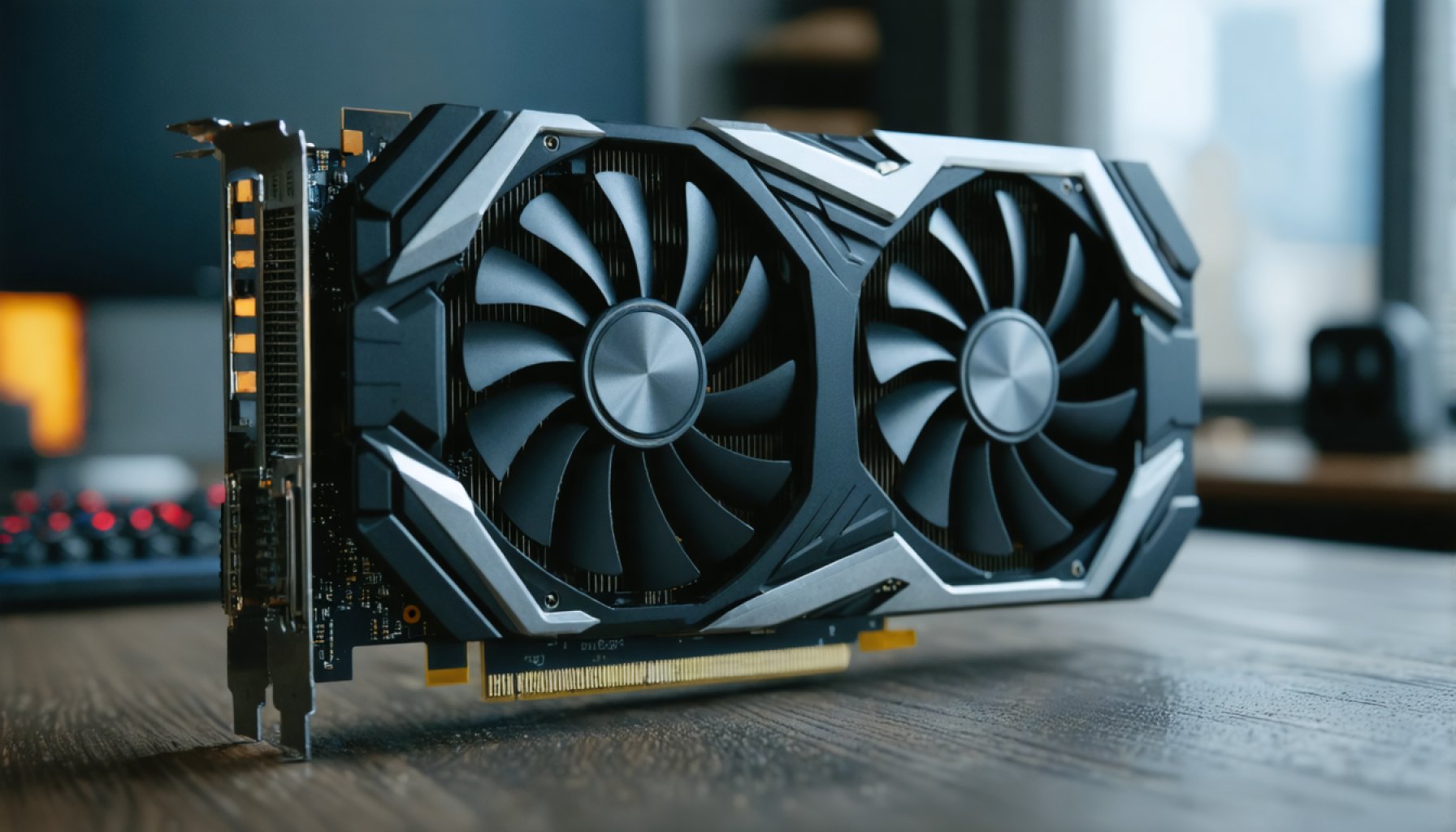- NVIDIA’s GeForce RTX 5090 and 5070 Ti GPUs are facing scrutiny due to a production anomaly causing a missing ROP (Render Output Unit) in less than 0.5% of units.
- The defect results in a 4-5% drop in game performance, affecting users seeking peak gaming and rendering experiences.
- NVIDIA has acknowledged the issue and assures consumers that the manufacturing glitch is resolved.
- Affected consumers are encouraged to verify their GPU specifications and request replacements via board manufacturers.
- This incident raises questions about the accelerated launch pace of NVIDIA’s RTX 50 series, underscoring the challenges in pushing technological boundaries.
In a sudden turn, high-performance graphics cards have let down gamers and tech enthusiasts alike. NVIDIA recently unveiled an unexpected flaw in a small fraction of its cutting-edge GeForce RTX 5090 and 5070 Ti GPUs. Through a production anomaly, these GPUs emerged from the factory with a missing ROP (Render Output Unit), weighing down their otherwise awe-inspiring performance.
NVIDIA’s latest flagship cards were anticipated to redefine graphical boundaries with their unparalleled speed and efficiency. However, revelations suggest a minority—less than 0.5% of units—suffer from this defect. Such a lapse cuts game performance by a noticeable 4-5%, a significant drop for those eyeing peak digital battles or sophisticated rendering.
The scant few missing their full ROP count signal a peculiar manufacturing hiccup, one NVIDIA assures us is resolved. Nevertheless, those trailblazing enough to adopt these early models might find their cards unable to harness their full prowess. Despite this momentary snag, affected users need not despair. NVIDIA encourages vigilant consumers to check their GPU specifications and request replacements directly from board manufacturers.
Yet, a question lingers: as whispers of these new RTX 50 series cards circulate the tech world, might NVIDIA have pushed their launch pipeline too hard? This mishap serves as a gentle reminder to consumers: even giants of the tech industry can stumble on their march toward progress. As NVIDIA works swiftly to sweep up this digital dust, users are called to ensure they receive the seamless gaming experience they were promised. After all, state-of-the-art power in your hands should never stumble at the starting line.
NVIDIA’s GeForce RTX 50 Series: The Hidden Challenges and Path Forward
How-To Steps & Life Hacks
If you suspect your NVIDIA GeForce RTX 5090 or 5070 Ti is affected by the ROP anomaly, follow these steps to address the issue:
1. Identify the Problem: Use GPU diagnostic tools like GPU-Z or HWInfo to check your GPU’s specifications and confirm if the ROP units match the expected count.
2. Contact Support: Reach out to your board manufacturer or NVIDIA directly, providing them with your GPU details and diagnostic findings.
3. Request Replacement: If confirmed, initiate a replacement or repair process through your warranty or customer service portal.
4. Stay Updated: Keep an eye on NVIDIA’s official channels for further announcements or updates regarding this issue.
Real-World Use Cases
Despite this setback, NVIDIA’s RTX 50 series remains a powerhouse for:
– Gaming Enthusiasts: Delivering near-cinematic graphics and supporting cutting-edge technologies like real-time ray tracing.
– Content Creators: Delivering acceleration in tools like Adobe Creative Cloud, Blender, and more due to their advanced architecture.
– Researchers and Data Scientists: Providing acceleration for AI workloads and deep learning models, thanks to their high CUDA core count.
Market Forecasts & Industry Trends
The GPU market continues to grow with an increased demand for high-performance units amid trends like increased gaming engagement, virtual reality expansion, and AI integration.
– Market Size: Projected to grow at a CAGR of about 11% from 2023 through 2028, according to recent market analysis.
– Emerging Trends: An increasing focus on sustainability and energy-efficient GPUs as well as the rise of cloud gaming services.
Reviews & Comparisons
Despite this flaw, the RTX 50 series is often compared with AMD’s Radeon RX series:
– Performance: The RTX 50 series typically edges out rivals with superior ray-tracing capabilities and DLSS technology.
– Pricing: NVIDIA’s offerings are often priced at a premium compared to AMD, reflecting their market positioning and performance.
For detailed comparisons and consumer reviews, platforms like Tom’s Hardware and TechSpot provide comprehensive insights.
Controversies & Limitations
– Manufacturing Quality Control: The current issue has sparked discussions on how rapidly advancing pipelines can compromise product quality.
– Supply Chain Challenges: Chip shortages and supply chain disruptions continue to affect availability and pricing.
Features, Specs & Pricing
– Features: Includes real-time ray tracing, DLSS 3.0 for super-sampled resolutions, and support for 8K gaming.
– Pricing: Expected retail prices range from $800 (5070 Ti) to over $1,500 (5090), depending on the retailer and availability. Prices may fluctuate due to market conditions and scalping.
Security & Sustainability
– Security: The RTX 50 series enhances security with improved encryption technologies, making them robust against cyber threats.
– Sustainability: NVIDIA is advancing towards greener tech with more energy-efficient GPUs and initiatives like GeForce NOW to reduce the carbon footprint.
Insights & Predictions
– Short-term: Consumers can expect resolutions for current manufacturing defects alongside firm policy responses from NVIDIA.
– Long-term: The GPU market will likely see increased competition with new entrants and technological advancements, particularly in AI-focused and energy-efficient designs.
Tutorials & Compatibility
Ensure compatibility with your system through regular driver updates via NVIDIA’s website and community forums for troubleshooting and advanced setup guides.
Pros & Cons Overview
Pros:
– Unmatched graphics performance and new features like improved DLSS.
– High suitability for gaming, creative, and research applications.
Cons:
– Highly priced, potential availability issues.
– Recent manufacturing defect has led to minor performance setbacks for some units.
Actionable Recommendations
1. Register Your Product: Always register your GPU for immediate support and warranty services.
2. Monitor Performance: Regularly check for updates and maintain optimal performance through best practices in cooling and power management.
3. Stay Notified: Follow NVIDIA’s official channels for news on firmware updates and product announcements to ensure your GPU operates at its peak.
For more information on NVIDIA and its latest innovations, visit the official link.











